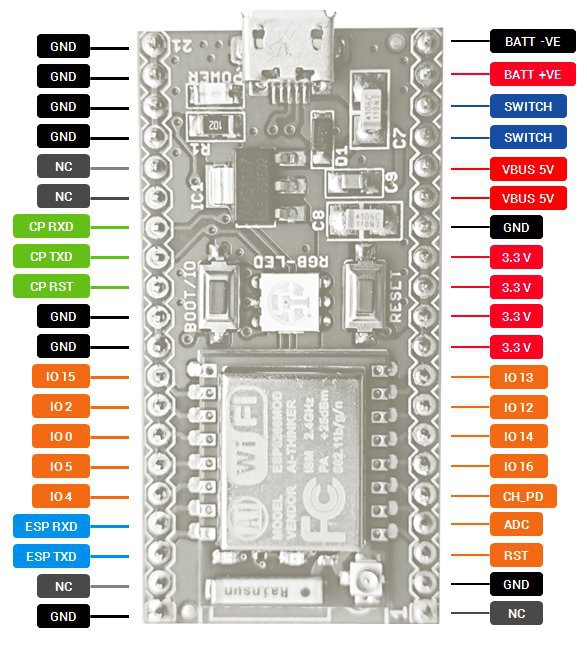Buy ESP8266 based SmartWIFI Development Module in India Circuit Diagram I discovered ESP8266 a few years ago. Since then, I'm fascinated by it. I use it wherever it fits 🙂 For less than $2, you can have a fully functional microcontroller with a full TCP/IP stack. It can run your device and be connected to a WIFI at the same time. It is the perfect solution for IoT applications and Smart Homes.

This finishes the complete smart parking system using the ESP8266 NodeMCU Module and different peripherals. You can use other sensors also in replacement of Ultrasonic and IR sensor. There is a vast application of Smart Parking System and different products can be added to make it more smart. The ESP8266 incorporates an 802.11b/g/n HT40 Wi-Fi transceiver, allowing it to connect to a Wi-Fi network to access the internet (Station mode) or to create its own Wi-Fi wireless network (Soft access point mode) to which other devices can connect.Power. Because the ESP8266's operating voltage range is 2.5V to 3.6V, the board includes an LDO voltage regulator to keep the voltage stable at 3.3V.

Smart Street Light Using NodeMCU and IOT ThingSpeak Circuit Diagram
All the ESP8266 projects are explained with step-by-step instructions with a components list, circuit diagram, source code, and all other required resources and information needed to build those ESP8266 projects. You can also explore projects with different IoT platforms like IFTTT, and Blynk. Amazon, Google Home, etc. Connect the LDR sensor to pins on Nodemcu ESP8266. 1. Connect a jumper wire from any one of the end to NodeMCU VIN pin. 2. Connect a jumper wire from another end to NodeMCU A0 pin. 2. Connect a resistor to the NodeMCU GND . Detection of an object. Connect the IR sensor to pins on Nodemcu ESP8266. 1. Connect a jumper wire from VCC to NodeMCU VIN In the world of IoT (Internet of Things), getting started with NodeMCU ESP8266 is an excellent way to dive into smart applications and connected devices. The NodeMCU ESP8266 is a popular, low-cost, and user-friendly development board designed for building IoT projects. With built-in Wi-Fi capabilities, a microcontroller, and GPIO pins, it

We have more than 150 ESP8266 NodeMCU Tutorials and project ideas as well as a Premium eBook Home Automation using ESP8266. Using the next quick links, you'll find all our ESP8266 Guides with easy to follow step-by-step instructions. Each tutorial includes circuit schematics, source code, images and videos. An ESP-Mesh-based smart home system was developed in the previous research using the ESP8266 feature with 3 different nodes, such as mechanical (door lock), electrical (fan, generic power switch
